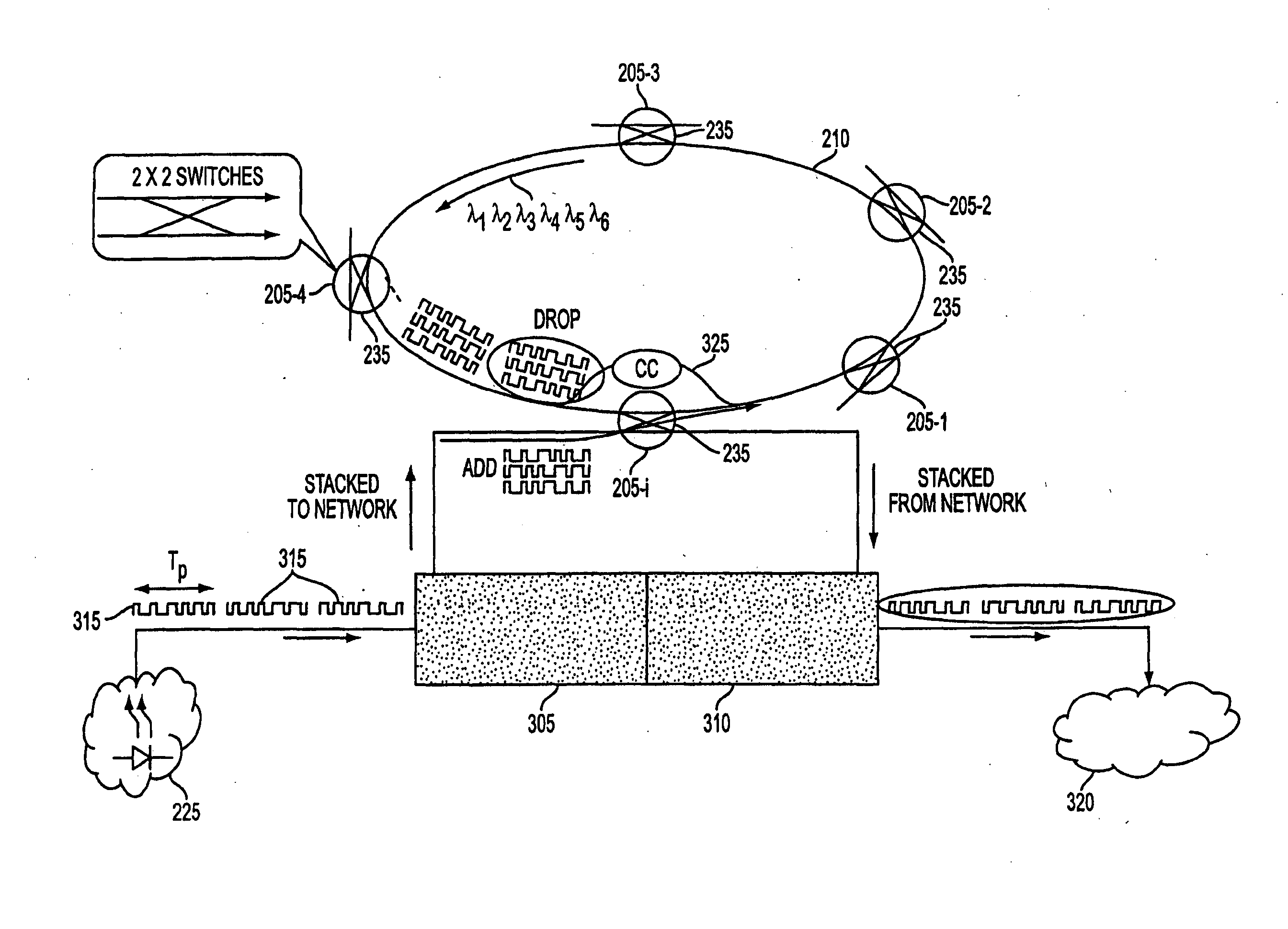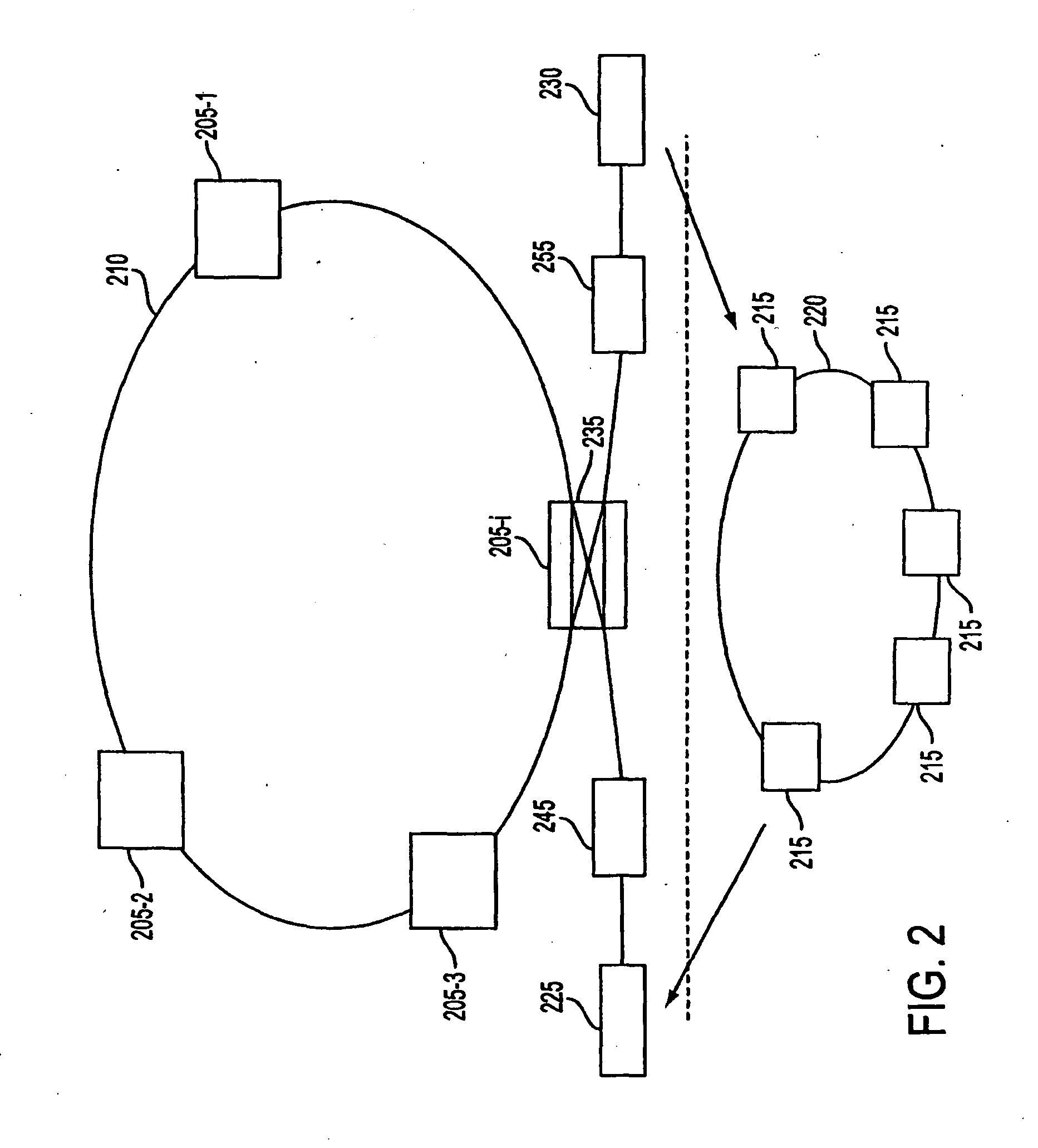Method for composite packet-switching over WDM by transparent photonic slot routing
a technology of transparent photonic slot and composite packets, applied in the field of optical communication systems, can solve the problems of inability to reconfigure wavelength add-drop multiplexers at an adequate speed, loss of chlamtac, intrinsic loss of power splitters, etc., and achieve the effect of increasing network reconfigurability and provisioning ability
- Summary
- Abstract
- Description
- Claims
- Application Information
AI Technical Summary
Benefits of technology
Problems solved by technology
Method used
Image
Examples
Embodiment Construction
[0053]FIG. 2 is a diagram of the present invention from the perspective of the prior art proposed in FIG. 1. In the present invention the core optical ring 210 has a plurality of nodes 205-1, . . . 205-i with each node having a switch 235, which in the example in FIG. 2 is a 2×2 switch but which may be an n×n switch. There is a tunable laser 225, which generates packets locally and a receiver 230. Stacker 245 stacks the packets (at different wavelengths) generated by tunable laser 225 to form a composite packet in a single photonic time slot. Stacker 245 may be serial or parallel. Unstacker 255 unstacks or demultiplexes the packets locally. Unstacker 255 may be serial or parallel. The subtending system 220 also may have a plurality of nodes 215. A node comprises a switch, a transmitter (e.g. tunable laser), a stacker, an unstacker and a receiver (detector). The subtending system may or may not have an optical feed and may be a ring, a star, a bus or any other conventional distributi...
PUM
 Login to View More
Login to View More Abstract
Description
Claims
Application Information
 Login to View More
Login to View More - R&D
- Intellectual Property
- Life Sciences
- Materials
- Tech Scout
- Unparalleled Data Quality
- Higher Quality Content
- 60% Fewer Hallucinations
Browse by: Latest US Patents, China's latest patents, Technical Efficacy Thesaurus, Application Domain, Technology Topic, Popular Technical Reports.
© 2025 PatSnap. All rights reserved.Legal|Privacy policy|Modern Slavery Act Transparency Statement|Sitemap|About US| Contact US: help@patsnap.com



